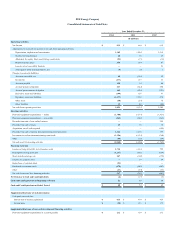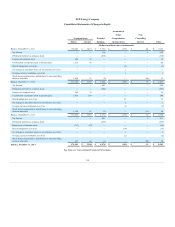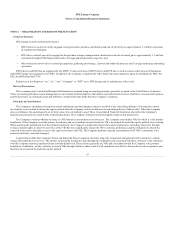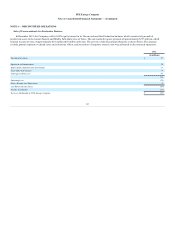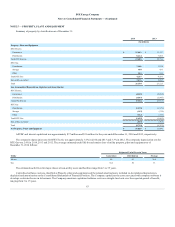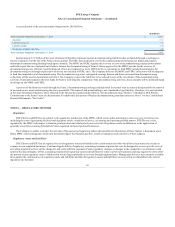DTE Energy 2014 Annual Report Download - page 62
Download and view the complete annual report
Please find page 62 of the 2014 DTE Energy annual report below. You can navigate through the pages in the report by either clicking on the pages listed below, or by using the keyword search tool below to find specific information within the annual report.
Notes receivable are typically considered delinquent when payment is not received for periods ranging from 60 to 120 days. The Company ceases
accruing interest (nonaccrual status), considers a note receivable impaired, and establishes an allowance for credit loss when it is probable that all principal
and interest amounts due will not be collected in accordance with the contractual terms of the note receivable. Cash payments received on nonaccrual status
notes receivable, that do not bring the account contractually current, are first applied to contractually owed past due interest, with any remainder applied to
principal. Accrual of interest is generally resumed when the note receivable becomes contractually current.
In determining the allowance for credit losses for notes receivable, we consider the historical payment experience and other factors that are expected to
have a specific impact on the counterparty’s ability to pay. In addition, the Company monitors the credit ratings of the counterparties from which we have
notes receivable.
The Company generally values inventory at average cost.
Natural gas inventory of $43 million and $4 million as of December 31, 2014 and 2013, respectively, at DTE Gas is determined using the last-in, first-
out (LIFO) method. At December 31, 2014, the replacement cost of gas remaining in storage exceeded the LIFO cost by $110 million. At December 31, 2013,
the replacement cost of gas remaining in storage exceeded the LIFO cost by $170 million.
Property is stated at cost and includes construction-related labor, materials, overheads and AFUDC for utility property. The cost of utility properties
retired is charged to accumulated depreciation. Expenditures for maintenance and repairs are charged to expense when incurred, except for Fermi 2.
Utility property at DTE Electric and DTE Gas is depreciated over its estimated useful life using straight-line rates approved by the MPSC.
Non-utility property is depreciated over its estimated useful life using the straight-line and units of production methods.
Depreciation, depletion and amortization expense also includes the amortization of certain regulatory assets.
Approximately $16 million and $26 million of expenses related to Fermi 2 refueling outages were accrued at December 31, 2014 and 2013,
respectively. Amounts are accrued on a pro-rata basis, generally over an 18-month period, that coincides with scheduled refueling outages at Fermi 2. This
accrual of outage costs matches the regulatory recovery of these costs in rates set by the MPSC. See Note 8 to the Consolidated Financial Statements,
"Regulatory Matters".
The cost of nuclear fuel is capitalized. The amortization of nuclear fuel is included within Fuel, purchased power, and gas in the Consolidated
Statements of Operations and is recorded using the units-of-production method.
Long-lived assets are reviewed for impairment whenever events or changes in circumstances indicate the carrying amount of an asset may not be
recoverable. If the carrying amount of the asset exceeds the expected discounted future cash flows generated by the asset, an impairment loss is recognized
resulting in the asset being written down to its estimated fair value. Assets to be disposed of are reported at the lower of the carrying amount or fair value, less
costs to sell.
59





